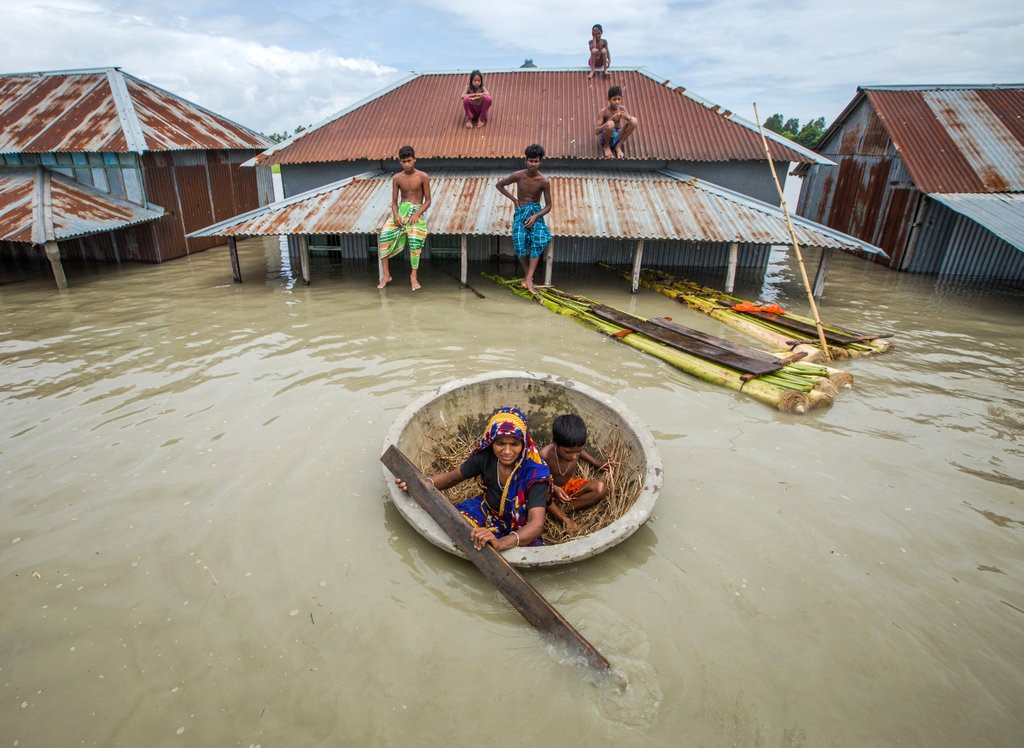Since 1900, global mean sea level has risen more than 20 cm (Rahmstorf, 2021). During this period, the rate of rise has accelerated and, from 2006 to 2018, sea level rose at 3.7 mm/yr. Projections indicate that the rate of sea level rise will continue to accelerate, with estimates ranging from an additional 1 to 3 m over the next century. About 200 million people currently live in coastal areas projected to be below sea level over this time period. Even more live in vulnerable coastal locations where frequent and severe tidal flooding will disrupt livelihoods and basic subsistence.
Residents of densely populated developing nations with substantial coastlines are particularly threatened by the ravages of climate change, with a combination of climate-driven impacts likely to create an ever-increasing number of environmental refugees. Among those at greatest risk will be the millions living along the coastlines and rivers of Bangladesh. With increased coastal and inland flooding, extreme climate events, and on-going sea level rise, strategies to mitigate the risks and help Bangladeshi communities adapt are essential to supporting vulnerable populations. In this unit, you’ll assess three approaches that may help coastal residents cope with the onslaught of climate-driven sea level rise along Bangladesh’s shorelines.

The Problem
Global mean sea level has risen about 20 cm since 1900, with about one third of that coming in just the last two and a half decades
While increases in sea level vary across the globe due to ocean floor topography and prevailing wind patterns, when sea levels rise as rapidly as they have been, even a small increase can have devastating effects on coastal habitats and human populations farther inland.
Displacement of humans by climate change is already occurring on a global scale.
Given inadequate support systems in many nations, such mass movement will likely pose a grave threat to global stability
For some, this movement involves migrating across national borders under the guidelines and supports afforded to refugees
Rather than a sudden migration due to catastrophic disaster, the displacement of climate– impacted populations can be more insidious.
With its high population density and vulnerable infrastructure, Bangladesh is exceptionally at risk from climate-change related threats like sea level rise.
Many of the displaced will flee to the slums of Dhaka, the nation’s capital.
Estimates are that 27 million people could be permanently displaced from their homes in Bangladesh by 2100
The combination of a highly vulnerable population and a host of climate-related threats make Bangladesh an area of great concern in coming decades
The Role of Climate Change
While there are clear links between increased global temperatures and sea level rise, the direct drivers of this change are complex.
In nations like Bangladesh, other climate–related threats compound the problem.
Solutions
Many governments and organizations have been working on identifying ways to help vulnerable coastal communities adapt to rising sea levels.
But for many low lying areas like Bangladesh, where agriculture is also concentrated along the coastline, increased flooding and salt water intrusion require more comprehensive strategies to help communities adapt.
Build Your Foundational Knowledge
Salt-tolerant rice:
Advances and Challenges in the Breeding of Salt–Tolerant Rice.
Saltwater aquaculture:
How Bangladesh’s Shrimp Industry is Driving a Fresh Water Crisis
Polder construction:
The polder promise: Unleashing the productive potential in southern Bangladesh
Solutions
1.3.1 Small Group Guided Worksheets
Additional sources:
Salt-tolerant rice: Salt tolerant rice varieties bring hope to Bangladesh farmers | International Centre for Climate Change and Development (ICCCAD)
Salt-based agriculture: Shrimp farming in Bangladesh – Responsible Seafood Advocate (globalseafood.org)
Polder construction: Dutch Polder Systems